Kid Cudi is the type of artist who can’t be easily categorized, which is his preference. Over the past seven years, the 31-year-old has carved out a niche for himself in the Hip Hop community, despite not being a traditional Hip Hop artist. He’s an anomaly who willingly inhabits a grey area, yet he still managed to develop a fiercely loyal following that hangs on to every emotive word the Cleveland native chants. Throughout the duration of his career, Cudi has become a musical bridge, able to bring music lovers of varying backgrounds together simply because he taps into kindred spirits. In the five-plus years since his debut, Man on the Moon: The End of Day, was released, Kid Cudi remains a trailblazing oddity who united worlds while creating his own.
The Crucible Of His Creativity
Cudi, like Wale and Drake, is one of several artists to emerge at the end of the last decade, as conventional Hip Hop was evolving. He blew up during the dawn of the blog rap era on the strength of “Day ‘N’ Nite,” which surfaced in late 2007, prior to his signing to Kanye West’s G.O.O.D Music label. Fleeting and peculiar, Dot da Genius’ production channeled the paranoia of its protagonist: the “lonely stoner.” It didn’t sound like anything else, and was indicative of where the genre would head in the next decade, with more rappers taking the liberty to dabble in different genres. This can be at least partially credited to Cudi’s own ingenuity, as well as the influence of his former mentor, Kanye West.
“Well one thing I wanted to do was combine sounds that really bring out intense moods,” Cudi said in a 2009 interview with HipHopDX. “Like on “Heart Of A Lion,” the synth is really intense during the ‘no, no, no’ part, the bridge and even at the end. It just adds to the triumphant nature; it makes it more mean. And I wanted it to always have that mean undertone like, ‘This is no joke, this is a serious thing.’ Even though “Heart Of A Lion” is kind of an uplifting joint, its [got] some seriousness to it. It’s like, ‘Man, I’m not fucking playing.’ The synths adds that really dope mean vibe. And I wanted that darkness on the album.”
With the benefit of hindsight, Cudi was a trailblazer of sorts for the artists of his generation for incorporating Indie Rock, Folk and Hip Hop, even when he wasn’t credited as a producer or a sole writer. After joining G.O.O.D Music in 2008, Cudi lent his creative input to 808s & Heartbreak, West’s biggest pre-Yeezus departure from his signature sound. In addition to co-writing “Welcome to Heartbreak,” “RoboCop,” “Paranoid” and “Heartless,” many have argued that Cudi’s style and acceptance of his own emotions are what inspired West—who was experiencing his own personal turmoil at the time — to create the album. In a 2009 interview with Complex, Cudi humbly admitted as much.
“Kanye is inspired by everybody around him,” he said. “He’s inspired by life. So yeah, he kind of drew inspiration from everyone around him at that moment when it came to 808s & Heartbreak.” West, always one to credit himself, has been very forthcoming about Cudi’s role in the album’s creation.
“Me and Cudi are the originators of the style, kinda like what Alexander McQueen is to fashion,” West said in Cudi’s 2009 Complex interview. Drake, whose inclination to venture into emotional territory has been deemed “soft” by staunch purveyors of machismo in Hip Hop, is often thought of as the leader of its evolved definition of masculinity. He has more commercial appeal than Cudi, but Cudi is actually more of an influencer in that regard. Artists like Drake and Childish Gambino are very willing to drown in their feelings, but they’re the offspring of something that Cudi helped guide on 808s & Heartbreak. Though it’s amusing to joke that the album is actually Kid Cudi’s debut, the impact of his first major label release proved that he was a separate, diverse entity from West.
I think this created an interesting dynamic, because while being questioned by those within the genre, Cudi, Drake and Wale were praised by those outside of Hip Hop for not being constrained to traditional masculine tropes.
“The gangster persona is finally dead, and these are the kids who killed it,” proclaimed GQ magazine in November of 2009. “One song at a time, they built a new era in which duct-taped kilos, exotic firearms, and freaky girls are out and real life is the focus. That can still mean trumped-up egos and battle raps, but it also means family, drama, vicious hangovers, and regular chicks who will make good love to you, then stomp out your heart.”
Ahead Of His Time
Though largely dark and drenched with sorrow from a thematic position, Man on the Moon: The End of Day reached in different directions musically. Most notable was his ability to not only feature both indie rock and Hip Hop artists on the album, but to fuse both sounds in the same song. Perhaps the best examples of this were “Alive” and “Pursuit of Happiness,” both of which featured Brooklyn-based Rock duo Ratatat. “Alive” plodded along thanks to a pounding kick and handclaps in place of snares, but the eerie guitars added a spaced-out element that fell in line with the album’s theme. On the song’s final verse, Cudi broke out into rhyme, preventing listeners from classifying the song as any one thing. This type of musical curveball had been his forte since “Day ‘N’ Nite” hit the Internet at the end of the last decade.
“Pursuit of Happiness” was an even better example of Cudi’s genre-bending approach. Also produced by Ratatat, it featured the equally experimental electronic rock duo MGMT as well. Though it was the album’s third and final single, he performed it in front of a studio audience for the first time during the Sep.11, 2009 episode of The Late Show with David Letterman.
In what was Ratatat’s first-ever performance on late-night television, those wailing guitars helped “Pursuit of Happiness” crossover and reach listeners outside of Hip Hop. In fact, if you look at some of 2009’s critically-acclaimed rock albums like Grizzly Bear’s Veckatimest, The Flaming Lips’ Embryonic, Dirty Projectors’ Bitte Orca, and Passion Pits’ Manners, “Pursuit of Happiness”—and Man on the Moon, in general—had more in common with them than any Hip Hop album released that year.
By Cudi’s own admission, the emotional nature of his music helped him develop a devoted and diverse fan base. In his 2009 HipHopDX interview, he draws an emotional link between his music and artists from Hip Hop’s “Golden Age.”
“Back then, people weren’t talking about ‘Public Enemy is Emo Rap’ because they’re talking about how it feels to be a black man in America,” Cudi explained. “Were mothafuckas calling it Emo Rap then? Just because it had a bad-ass nature doesn’t mean that they weren’t expressing their emotions. And that’s all I’m doing in my music. Sorry that it’s not like super bad-ass and I’m not talking about fucking rioting because it’s a different day and age now, it’s not like it was when Public Enemy was making records. Granted, there’s a lot of shit still going on, but it’s a different day and age and music is about the times. And the shit I’m speaking about is the life and times [in] my world, and what a lot of kids deal with today.”
Accepting His Brilliance
Cudi has applied this method to his subsequent releases, culminating in 2012’s WZRD, an alternative rock venture by he and Dot da Genius. Where Cudi had previously blended hip-hop and rock elements, this was a pure rock album. The critical reception was scattered and the commercial response was cold, which Cudi attributed to Universal Republic Records treating it like “some indie side project tax write off.”
For example, his first album and its follow up, Man on the Moon ll: The Legend of Mr. Rager, debuted at numbers four and three on the U.S. Billboard 200 chart, earning averages of 71 and 69 on Metacritic. Though WZRD also debuted at number three on the Billboard 200, it sold just 66,000 units in its first week (compared to 104,000 for his first album and 169,000 for his second), and the average Metacritic score dropped considerably to 50.
The album was ambitious, but their cover of the folk classic “Where Did You Sleep Last Night?” will immediately make you want to hear Nirvana’s version. Despite the unimpressive sales (less than 100,000 to date), Kid Cudi loyalists gravitated to it because they genuinely appreciate all of his creative endeavors, no matter what end of the spectrum they lie on.
More than five years after the release of Man on the Moon: End of Day, discussions focusing on what, exactly, Kid Cudi is have ceased. He’s a rock star, in terms of music and attitude—one who doesn’t care to play by the rules of others. Look no further than his fashion choices. The crop top he wore at Coachella last year caused a stir, but the only other hip-hop artist who could pull that off is Young Thug, who still has yet to reach Cudi’s popularity. He’s also become somewhat of a pioneer for the post-hyper masculine generation of rappers for reasons other than a willingness to share his emotions. He’s one of few who can get away with having Haim on the same album as Too Short or Kendrick Lamar without raising eyebrows. At the same time, his ability to weave indie and alternative rock into his music has inspired to do others to do the same. It’s arguable that Sonnymoon’s Anna Wise wouldn’t have ended up on Lamar’s good kid, m.A.A.d city if Cudi hadn’t carved out that lane first. When Cudi finally calls it a career, that innovation will be the strongest part of his legacy.
Julian Kimble has written for Complex, Vibe, Billboard, Gawker, the Washington City Paper and more. Follow him on Twitter @JRK316.



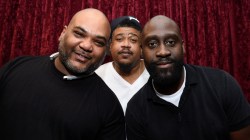

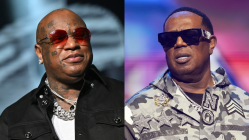
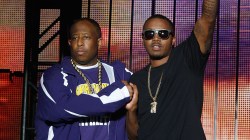
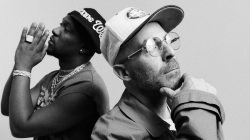
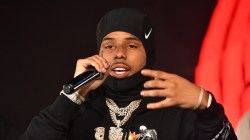

one of the worst voices in music.
This album is amazing on acid and shrooms
you needs drugs to be able to listen to cudi right
Love everything he puts out. That first album is a classic
Kid Cudi is terrible, never gotten the love he gets. He really doesn’t rap, and you really can’t call what he does singing. Cudi is just an artist with absolutely no talent.
Cudi has a loyal fan base because he speaks to real fucking people who are hybrids, outcasts, and weirdos in their own lives. WZRD was a MASTERPIECE. Not only did he and Dot cross genres, but they swagged that shit the fuck out. None of these other cats can do that shit. Wale and Drake are both great artists respectively, however, neither can be compared to the Kid who makes music for the others. Indicud? None of these other cats can have Kendrick, Too $hort, and Michael Bolton on the same album…the homie is living his dreams and doing it with more finesse than many others, I think that shit’s dope and admiral.